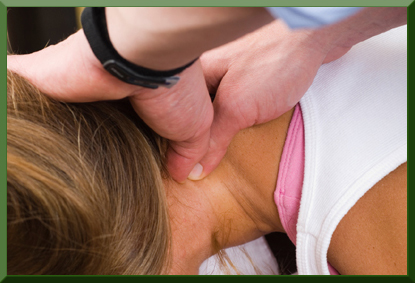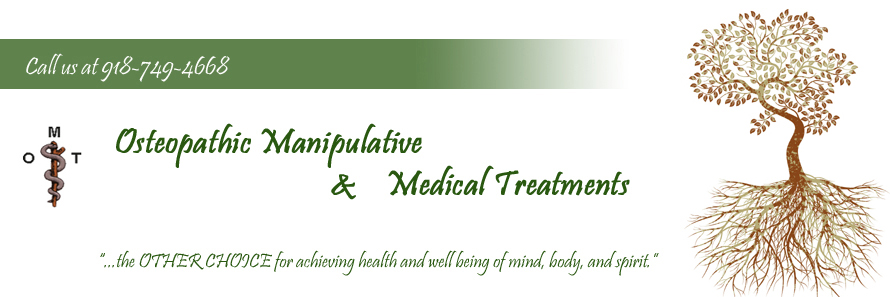
What is Osteopathic Care and What Can It Do For My Pain?
Osteopathic medical care utilizes a history of the patientís presenting complaints, along with a full medical history and
physical examination to determine which treatment(s) would best address the patientís current condition. The medical
decision to provide treatment may include, but is not limited to, medications, exercise/stretching, referral for physical
therapy, rehabilitative medicine, acupuncture, and/or osteopathic manipulative treatment (OMT). In addition, the presenting
complaint may require laboratory studies, radiologic studies, and/or physician referrals to fully diagnose the patientís
condition.
Osteopathic Manipulative Treatment is a hands-on care technique unique to Osteopathic physicians (D.O.ís). This
technique is not suitable for all patients and patients coming to our clinic should not expect to receive OMT unless it is
medically indicated for their particular medical condition. When OMT is indicated, your physician will chose the best technique
to address your medical complaints. These may include articulation (movement of a joint or limb), stretching, pressure,
gentle mobilization of tissues, visceral, neuromuscular, cranial, craniosacral, and resistance techniques, to name a few.
Osteopathic Medicine provides a wholistic approach designed to enable the body to heal itself and attain health naturally.
Osteopathic Medicine and Medical Acupuncture are the other choices for pain, health, well being, and optimal care of the mind, body, and spirit.
These osteopathic treatments may include articulation (movement of a joint or limb), stretching, pressure, gentle mobilization
of tissues, visceral, neuromuscular, cranial, craniosacral, and resistance techniques, to name a few. Osteopathic Medicine
provides a wholistic approach designed to enable the body to heal itself and attain health naturally.
...the OTHER CHOICE for achieving health and well being of mind,
body, and spirit.&trade
Does OMT really work?
The New England Journal of Medicine published a study in the November 4, 1999, issue researching lower-back pain response to OMT treatments.
Researchers divided the study into two groups of patients. The first group received standard treatments of hot and cold packs, physical therapy,
and drugs. The second group received the standard treatments plus OMT. After twelve weeks, both patient groups felt better, but those who had
received the OMT treatments reported that they had used less drugs and physical therapy. This means that the second group had fewer side effects
and lower health care costs.
New England Journal Of Medicine November 4, 1999 Issue
Who can benefit from Osteopathic Care and How Can It Improve My Health?
Osteopathic medical care is suitable for patients of all ages, from infants to the elderly! When appropriate, the medical decision to utilize
Osteopathic Manipulative Medicine (OMM) to ease pain, treat disease, promote healing, decrease edema, and increase mobility may be made. OMM is
often used to treat muscle pain, but it can also address physiologic conditions which cause asthma, sinus disorders, carpal tunnel syndrome, plantar
fasciitis, and migraines, to name a few.
When medically indicated, OMM can complement, reduce, or even replace the need for drugs. OMM may even, in
a few cases, provide enough pain relief that the patient can delay or forego surgery. In most cases, OMM is used in conjunction with traditional medical
treatments or therapies to promote the healing process, treat the clinical manifestations disease caused by the malfunctioning of one or more of the
bodies physiological systems (i.e. malfunction in the respiratory system causing asthma and COPD or malfunction of the structural/musculoskeletal
system causing chest pain in the patient who has had a coronary artery bypass), and decrease patient discomfort.
|








